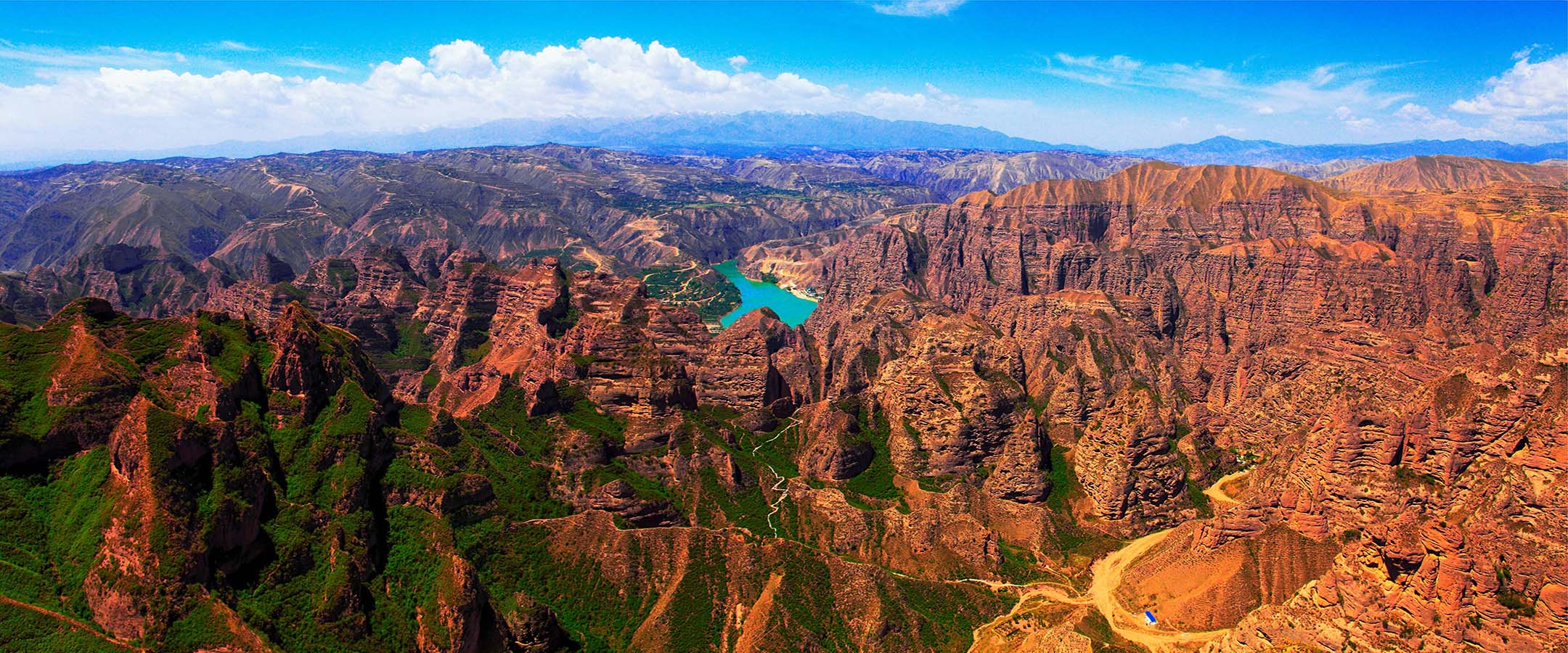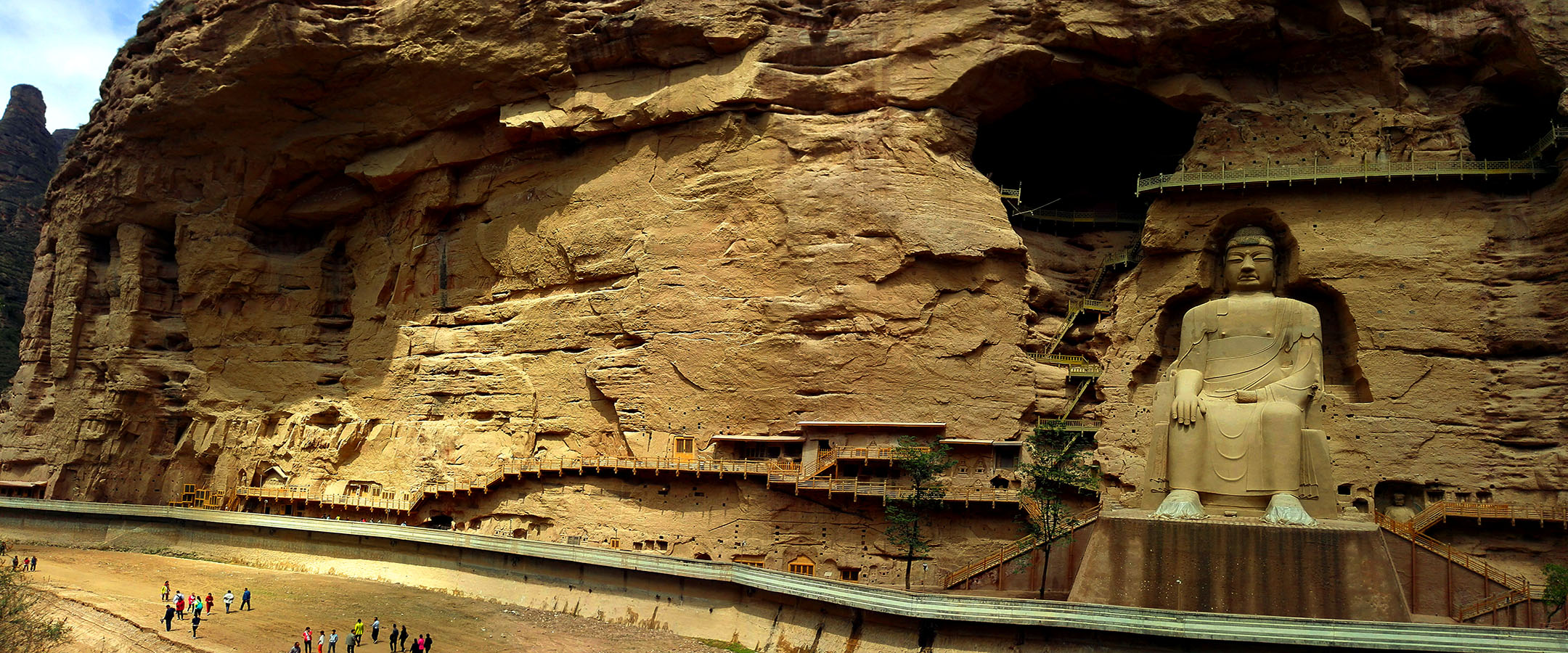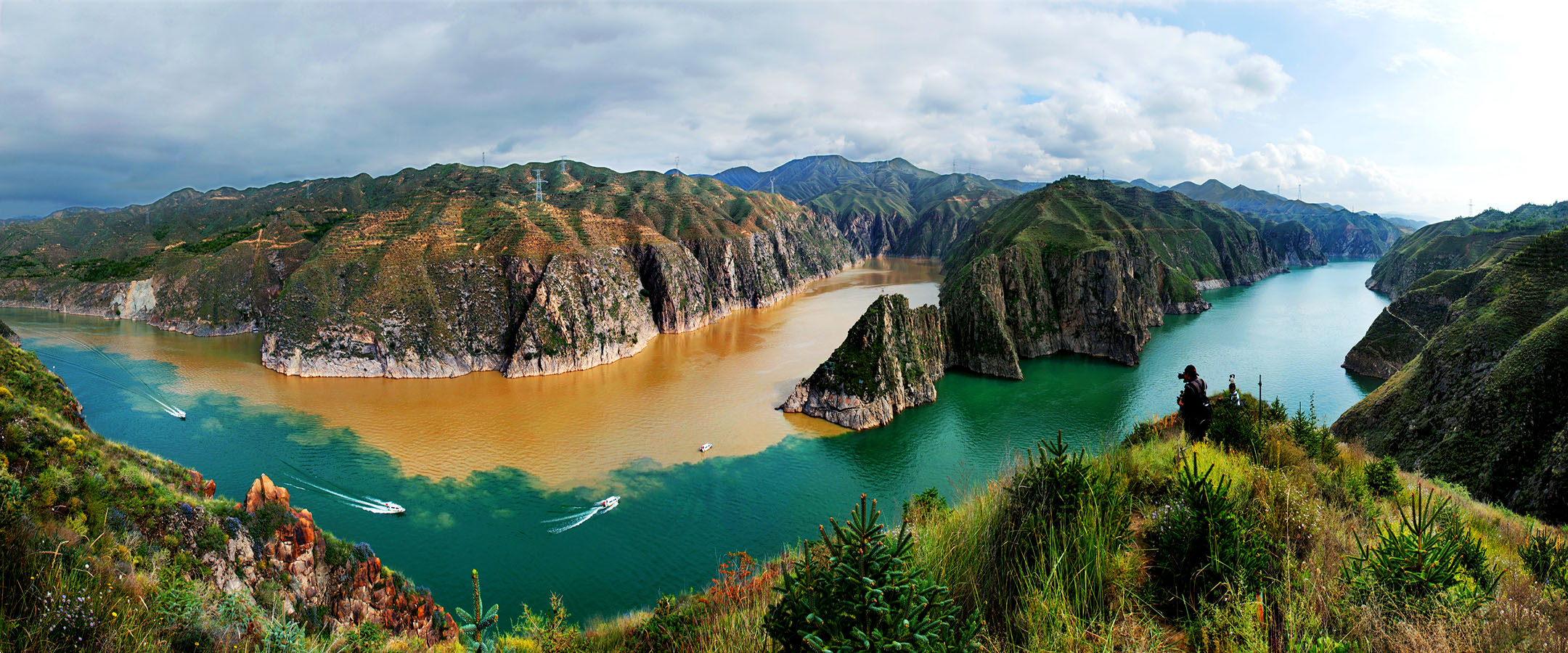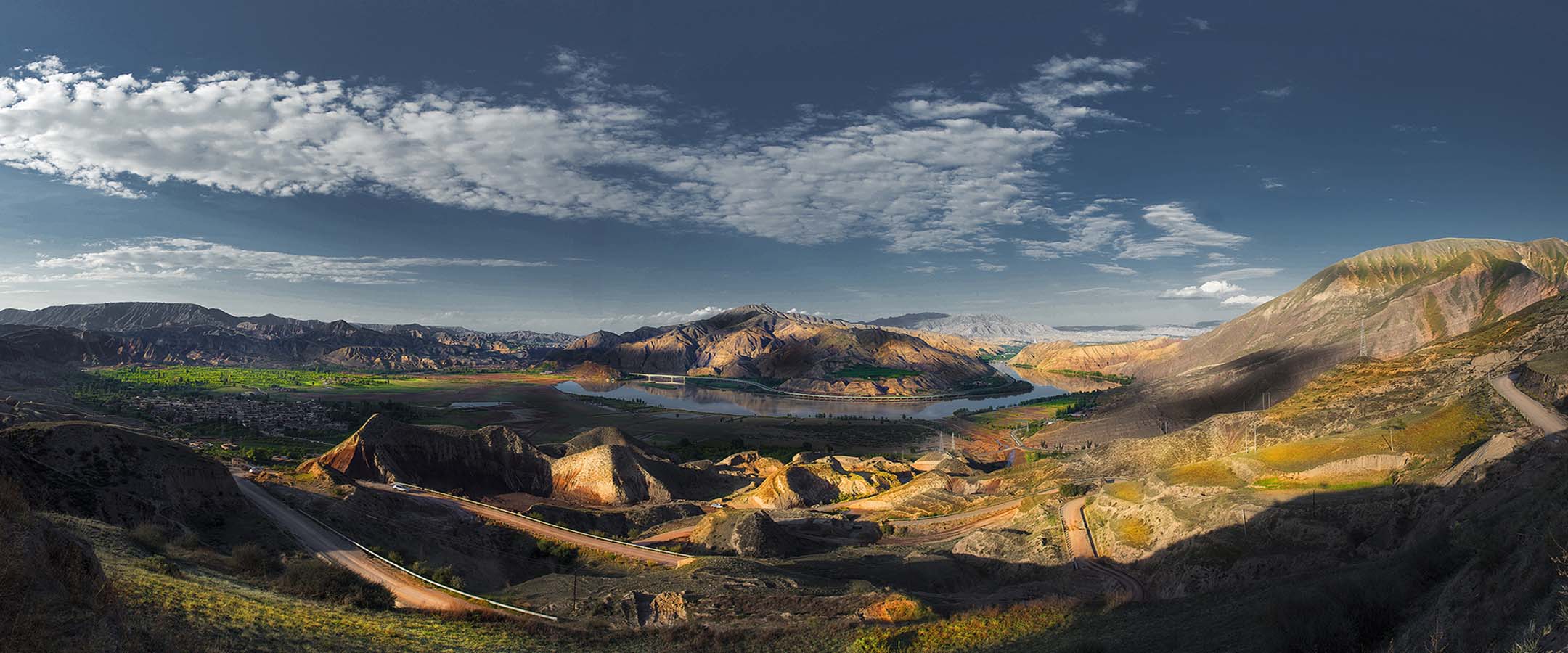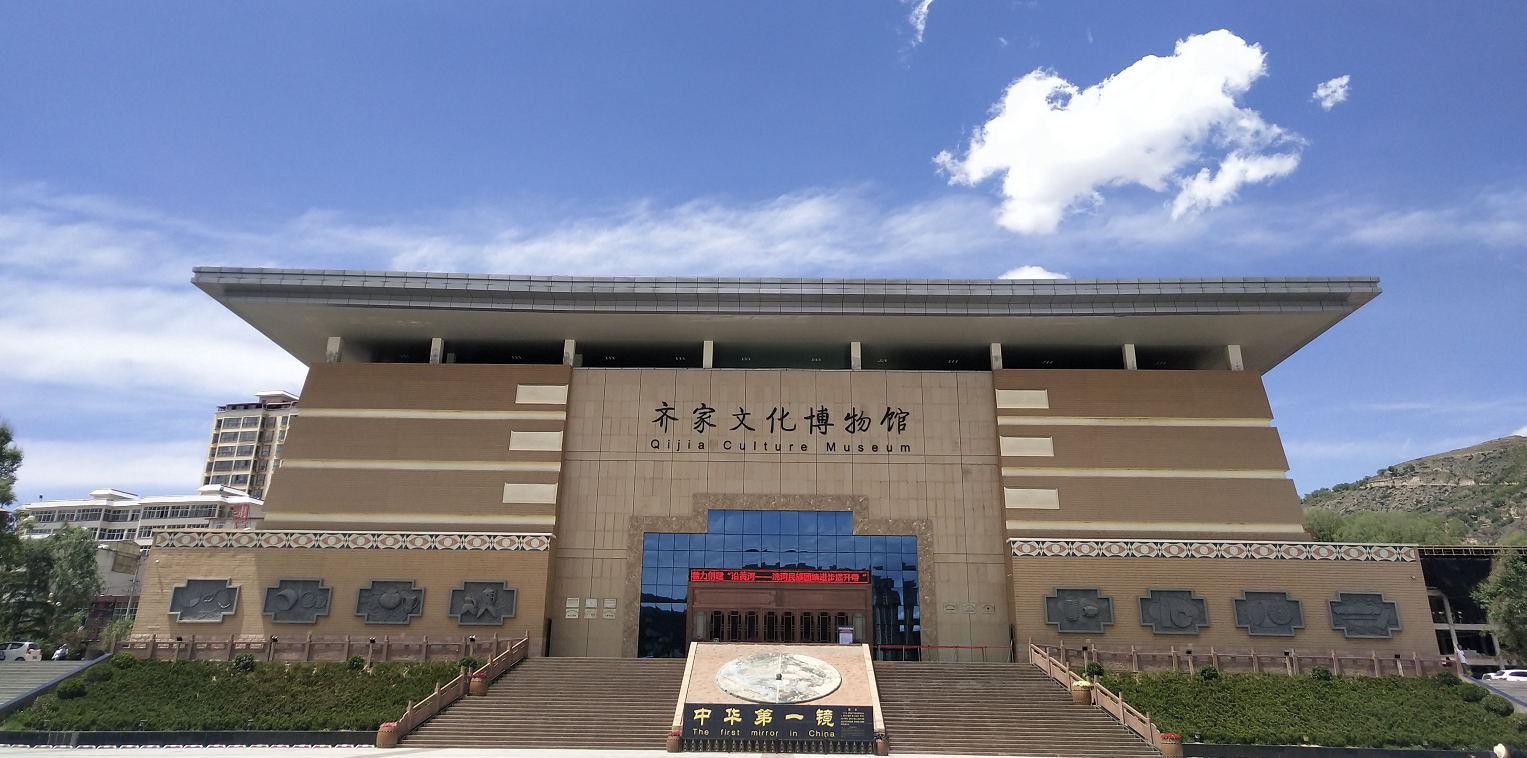齐家文化博物馆
Qijia Culture Museum
甘肃省临夏回族自治州广河县 Guanghe County, Linxia Hui Autonomous Prefecture, Gansu Province
齐家文化距今约4300年-3500年,因1924年瑞典考古学家安特生首次在甘肃省广河县齐家坪发现而得名。齐家文化是举世闻名的文化遗存,是中国最早的青铜时代文化,是华夏文明的重要源头之一,是人类灿烂的文化瑰宝。为配合国家“一带一路”建设,进一步保护开发利用齐家文化资源,挖掘和弘扬齐家文化与华夏文明,让齐家文化走向世界,让世界了解齐家文化,着力提高齐家文化的世界知名度和国际影响力,于2015年、2016年成功召开了由中国社会科学院古代文明研究中心、中共甘肃省委宣传部、甘肃省文化厅、甘肃省文物局、中共广河县委、广河县人民政府主办的“齐家文化与华夏文明”国际研讨会和国际论坛。出席会议的有来自大陆的约20个研究机构的代表,以及美国哈佛大学、伊利诺大学、耶鲁大学、香港中文大学、台北故宫博物院、台南艺术大学、日本东北学院的代表190余人。中国社会科学院学部委员、考古研究所所长、古代文明研究中心主任、中国考古学会理事长王巍、研究员易华、原甘青考古队队长谢端琚先生以及一批前辈学者参加会议并作学术交流和深入研讨,共收到110余篇论文,出版了两期《中国•广河齐家文化与华夏文明论文集》。研讨会和论坛从不同视角和层面论证了齐家文化在华夏文明中的地位和作用,学术界重新认识了齐家文化应有的地位和历史价值,将齐家文化的研究推向了一个新的高度。
齐家文化博物馆建成于2007年并实行免费开放,为正科级事业单位,全馆现有干部职工36人,其中正式职工12人,财政临时工2人,其余为单位自聘的工作人员、保安、保洁。下设四个股室,分别为办公室、陈展社教部、保管研究部、信息中心。2011年被甘肃省委宣传部命名为省级爱国主义教育基地;2015年被命名为中国社会科学院古代文明研究中心齐家文化研究基地、中美合作洮河流域考古工作站,2016年被命名为天津大学教学科研实践基地、兰州大学历史文化学院考古学教学实习基地、西北民族大学学科建设田野调研基地;2018年被命名为上海同济大学实习基地;2019年被甘肃省委宣传部、甘肃省社会科学界联合会命名为第一批甘肃省社会科学普及示范基地。现有馆藏文物1680件,其中一级5件,二级42件,三级204件。自开馆以来,累计接待观众达166.8万人(次)以上,其中国外专家学者178人,国内专家学者(包括港、澳、台)850人。2016年10月在齐家文化广场新建成了目前全国唯一以齐家文化命名的专题博物馆,占地面积14538平方米,建筑面积5104平方米。馆内共有发现齐家、走进齐家、精彩齐家、辉煌齐家4个展厅,分别陈列着齐家文化陶器、玉器、铜器、骨器、石器等不同等级的文物480余件。在辅助展览中,制作和复原了齐家坪、武威皇娘娘台、临潭磨沟、青海民和喇家等齐家文化场景12处,并从齐家文化的发现与研究、齐家文化的生业形态,齐家文化的手工业、齐家文化的聚落与社会和东西文化交流5个方面较为全面地反映了齐家文化时期的社会形态。近年来,齐家文化博物馆对标国家重大战略和广河发展实际,深入挖掘黄河流域齐家文化蕴含的时代价值,讲好“齐家故事”,延续历史文脉,推动文化复兴,坚定文化自信,做好齐家文化的传承、保护、展示、研究、开发等文章,让文物从展柜“走”出来,为发展文创产业,文旅深度融合,文化强县建设打下坚实的基础,提供充分养料。
With a history of 3500-4300 years, Qijia Culture was named after Qijiaping. The place was first unearthed by Swedish archaeologist J.G.Anderson in Guanghe county, Gansu province in 1924. Qijia Culture is a world-famous cultural relic, the earliest Bronze Age culture in China. It is one of the important sources of Chinese civilization and it is a culture treasure of mankind.
In 2015 and 2016, Qijia Culture and Chinese Civilization international symposium and forum were successfully held by Ancient Civilization Research Center of Chinese Academy of Social Science, Publicity Department of the CPC Gansu Provincial Committee , Gansu Provincial Department of Culture, Gansu Provincial Bureau of Cultural Relics, the CPC Guanghe County Committee, the People’s Government of Guanghe County. The symposium and forum aimed at coordinating with the construction of the Belt and Road Initiative, further protecting and developing Qijia Culture, exploring and carrying forward Qijia Culture and Chinese Civilization, increasing awareness and influence of Qijia Culture worldwide.
Representatives from about 20 research institutions of China’s mainland and over 190 representatives from Harvard University, University of Illinois, Yale University, Chinese University of Hong Kong, Taipei National Palace Museum, Tainan University of Arts, Tohoku College attended the conference. A number of seniors and scholars have fully communicated academic issues with each other and carried out academic exchanges. More than 110 papers were received and two issues of China•Guanghe Qijia Culture and Chinese Civilization Paper Collection were published. The symposium and forum have demonstrated the status and influence of Qijia Culture in Chinese Civilization from different perspectives and levels and have recognized the status and historic value of Qijia Culture in academics.These efforts has pushed Qijia Culture research to a new level.
Qijia Culture Museum was established in 2007 and is opened to the public for free. There are 36 staff members in the museum, 12 regular employees, 2 temporary financial employees, security staff, cleaners and other workers. The museum has 4 divisions: office, exhibition and social education division, preservation and research division, information center.
It was named the Provincial Patriotic Education Base by Publicity Department of Gansu Provincial Party Committee in 2011, Qijia Culture Research Base of Ancient Civilization Research Center of Chinese Academy of Social Science and Tao River Basin Archaeological workstation of China-US Cooperation in 2015, Teaching and Scientific Research Practice Base of Tianjin University, Archaeology Teaching Practice Base of History and Culture College of Lanzhou University, Disciplinary Construction Field Research Base of Northwest University for Nationalities in 2016, Practice Base of Shanghai’s Tongji University in 2018, The First Social Science Popularization Demonstration Base of Gansu Province by Publicity Department of Gansu Provincial Party Committee and Gansu Social Sciences Association in 2019.
1680 pieces of cultural relics are preserved in the museum.There are 5 pieces of National First Level, 42 of Second Level, 204 of Third Level. The museum has received more than 1 million and 668 thousand audiences including 178 experts and scholars from abroad, 850 from home.
In October 2016, Qijia Culture Museum was built in Qijia Culture square, covering an area of 14,538 square meters and a building area of 5104 square meters. It is the only theme museum of Qijia Culture in China. There are four exhibition halls in Qijia Culture Museum, namely,Finding Qijia Culture , Approaching Qijia Culture , Wonderful Qijia Culture and Brilliant Qijia Culture, which exhibit more than 480 pieces of cultural relics of different levels and textures, such as pottery, jade, bronze, bone and stone wares. On supplementary exhibits, they made and restored 12 Qijia Culture scenes: Qijiaping in Guanghe County, Huangniangniangtai in Wuwei City, Mogou in Lintan County (all above are in Gansu Province), Lajia in Minhe County, Qinghai Province. The museum comprehensively reflects the social pattern during Qijia Culture period from 5 aspects of discovery and research, means of livelihood, the handicraft industry, the settlement of Qijia Culture and east-west culture exchange. In recent years, based on national major strategy and development in Guanghe County, Qijia Culture Museum deeply explores time value of Qijia Culture on the Yellow River basin to continue historical cultural context and strengthen culture confidence. Inheriting, protecting, displaying, researching and exploring of Qijia Culture have laid a solid foundation for developing cultural and creative industry, which will deeply integrate culture with tourism and reinforce the county’s cultural construction.

